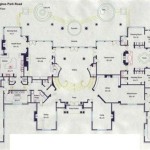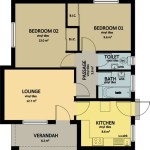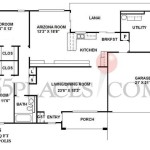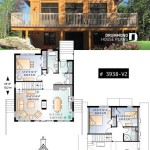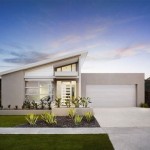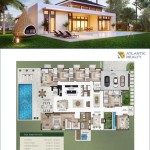Home Plans Economical To Build
Building a home is a significant investment, and cost considerations are paramount for many prospective homeowners. Choosing an economical house plan is the first step towards managing the overall budget effectively. This involves careful consideration of various factors, from the square footage and layout to the materials and construction techniques employed.
Key Considerations for Economical Home Plans
Several factors contribute to the overall cost-effectiveness of a home plan. Understanding these elements allows for informed decision-making during the planning phase:
- Smaller Footprint: Reducing the overall square footage directly impacts material and labor costs. Compact designs maximize space utilization and minimize unnecessary expenditures.
- Simple Shapes: Complex rooflines and intricate architectural details add to construction complexity and cost. Simpler shapes, such as rectangular or square footprints, are more economical to build.
- Open Floor Plans: Fewer interior walls translate to lower material costs and create a sense of spaciousness. Open floor plans optimize natural light and ventilation, reducing energy consumption.
Choosing the Right Materials
Selecting cost-effective building materials significantly influences the overall budget. Balancing durability and affordability is key to achieving long-term value:
- Standard Lumber Dimensions: Utilizing standard lumber sizes minimizes waste and reduces the need for custom cuts, leading to cost savings.
- Locally Sourced Materials: Transporting materials adds to the overall cost. Opting for locally sourced materials reduces transportation expenses and supports local businesses.
- Energy-Efficient Materials: Investing in energy-efficient insulation, windows, and roofing materials may have a higher upfront cost but can lead to significant long-term savings on utility bills.
- Consider Alternative Materials: Explore cost-effective alternatives like pre-cast concrete panels, Insulated Concrete Forms (ICFs), or structural insulated panels (SIPs). These can offer benefits in terms of speed of construction and energy efficiency.
Optimizing the Design for Efficiency
Smart design choices contribute to efficient use of space and resources, ultimately impacting the overall cost:
- Multi-functional Spaces: Designing rooms that can serve multiple purposes, such as a combined living and dining area, reduces the need for dedicated spaces and minimizes square footage.
- Minimize Plumbing Runs: Grouping plumbing fixtures together, such as bathrooms back-to-back or kitchen and laundry rooms adjacent, reduces the length of plumbing pipes required, saving on material and labor costs.
- Smart Placement of Windows and Doors: Strategically placed windows and doors can maximize natural light and ventilation, reducing the need for artificial lighting and HVAC systems, thereby lowering energy consumption.
Prefabrication and Modular Construction
Exploring prefabrication and modular construction methods can offer significant cost and time savings compared to traditional on-site building:
- Factory-Controlled Environment: Components are built in a controlled factory environment, minimizing weather delays and ensuring consistent quality.
- Reduced Construction Time: Pre-built modules are transported to the site and assembled, significantly shortening the overall construction timeline.
- Minimized Material Waste: Factory production processes optimize material usage and minimize waste generation.
Working with Professionals
Engaging experienced professionals is essential for a successful and cost-effective building project:
- Experienced Architects and Builders: Architects and builders with experience in designing and constructing economical homes can provide valuable insights and guidance throughout the process.
- Value Engineering: Collaborate with professionals to explore value engineering options. This involves identifying cost-saving alternatives without compromising on quality or functionality.
- Detailed Cost Estimates: Obtain detailed cost estimates from builders to accurately assess the budget and avoid unexpected expenses.
Research and Planning
Thorough research and planning are crucial for identifying and selecting the most suitable economical home plan:
- Online Resources: Numerous online resources offer a wide selection of pre-designed economical home plans.
- Local Building Codes: Ensure the chosen plan complies with local building codes and regulations.
- Site Analysis: Consider the specific site conditions, such as topography and soil type, when selecting a home plan. Adapting a plan to suit the site can minimize site development costs.
Long-Term Cost Considerations
While focusing on upfront construction costs is important, consider the long-term operational costs associated with owning a home:
- Energy Efficiency: Investing in energy-efficient features, such as insulation and appliances, can lead to significant long-term savings on utility bills.
- Maintenance Requirements: Choosing durable and low-maintenance materials can reduce future maintenance costs.
- Resale Value: Consider the potential resale value of the home. A well-designed and efficiently built home is likely to retain its value over time.

Affordable House Plans Our Est To Build Blog Homeplans Com

Affordable House Plans Our Est To Build Blog Homeplans Com
Affordable House Plans Our Est To Build Blog Homeplans Com

Affordable Home Plan Ch3

Affordable Home Plan Ch137

Plan 41459 Economical To Build One Story House With Carpor

Affordable Home Plan Ch35 House

42 Skippy 1 Bedroom House Plan Home Blueprints To Build Plans For

To Build Home Plan 4 Ways Save Big The House Designers

To Build Dream Home Plans Dfd House Blog

